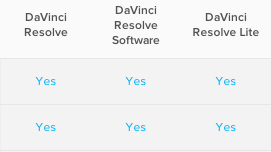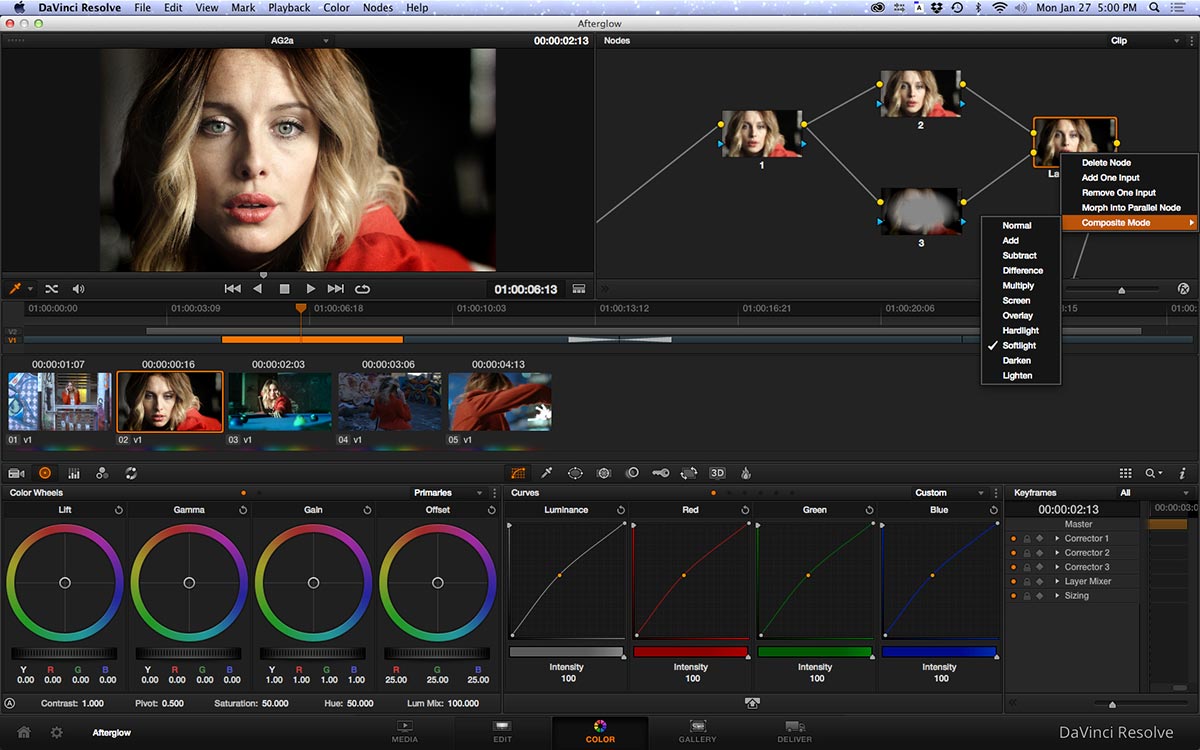DaVinci Resolve 11 – New Features For Colorists
DaVinci Resolve 11 was announced at NAB 2014 and will be available in (late) June. As always Blackmagic Design have pulled out all the stops to pack over 140 new features into what is simply the best (free!) software for colour grading available today.
In these three videos (higher quality ones can be seen on the exceptionally slick Resolve website ) Alexis Van Hurkman walks you through some of the new features in DaVinci Resolve 11, including over 70 new editing features – which is one of the main areas that Resolve continues to develop. You can now ingest (there’s a full checksum verification card copying utility inside Resolve now) edit (including simple text titles), colour grade and export to formats like DCP – all from inside Resolve.
What’s New in DaVinci Resolve 11?
There are a huge number of new features in Resolve 11, which you can check out in fine-grain detail on the epically long comparison page which demonstrates that most of the new additions are also available for free in Resolve Lite.
What’s not in the free version are the new collaborative and remote grading features, the historically removed noise reduction and motion blur capabilities, all stereoscopic 3D functionality, mastering to tape and all of the grading panel tools.
In the video above editor Scott Simmons from PVC checks out the Resolve booth at NAB, where the headline updates are covered. To sum up the top new features are remote colour grading, collaborative workflows, editing features, checksum media copying, colour chart auto-correcting and much more.
For a quick read on what’s great about some of these new features, Steve Sebban has selected his top 7 new features in this short post which is a helpful read if you’re considering purchasing the full version of the software.
DaVinci Resolve 10 Tutorials
In this ultra quick tip Jessie Borkowski demonstrates how to fix lens vignetting from vintage lenses (all the rage these days) within DaVinci Resolve 10.
In this 10 minute tutorial ICA colorist Warren Eagles demonstrates how to colour grade across baked-in dissolves when using the scene detect feature inside Resolve. Scene detect will take a finished show and add in and edit where it detects a shot change. Warren also has an fxphd course for $199 on Resolve 10, which you can check out here.
In this 10 minute tutorial, colorist and trainer Patrick Inhofer from Tao of Color and Mixing Light, walks you through the idea of pre-rendering in this excerpt from his ‘grade-along’ of short film Mother Died. For more of a flavour of what you get in a grade-along series check out this introduction from Pat. It’s probably the closest you can get to crawling inside a colorist’s head as they take a project from start to finish.
Photographer and video-blogger Curtis Judd has posted these three tutorials on using DaVinci Resolve 10 Lite to do simple things like correcting for white balance and skin smoothing. If you’re new to Resolve, these tutorials will be very helpful. In the first couple of tutorials Curtis mentions Alexis Van Hurkman’s Color Correction Handbook 2nd Edition, which is also well worth a read for any colorist – new or old.
DaVinci Resolve Tips
If you’ve never even touched DaVinci Resolve before, you might want to have a quick read of Oliver Peter’s review of Resolve 10 – covering some of the main strengths and weaknesses of the application – as well his thoughts on whether you even need to colour correct in an application other than your editing software.
DaVinci Resolve 10 – even the free Lite version – represents an amazing level of versatility. For example, many editors and DITs use it to prep media for an edit. It’s super simple to apply LUTs to log-profile camera files and spit out edit-ready, adjusted source files. Resolve is one of the fastest renderers I’ve encountered and it handles cross-format conversions quite well.
To round out this post here are a couple of quick tips from colorists who tweet!
Resolve tip, if working with local grades, use Col Trace to pull the grades, tracks, vers from your “hero” timeline into your new EDLs
— Warren Eagles (@warreneagles) March 26, 2014
I don’t use “Original Memory” enough in #Resolve10 it Undos all changes from when clip was selected. Selecting new clip resets memory. — Robert Pitman (@robert_pitman) March 18, 2014







